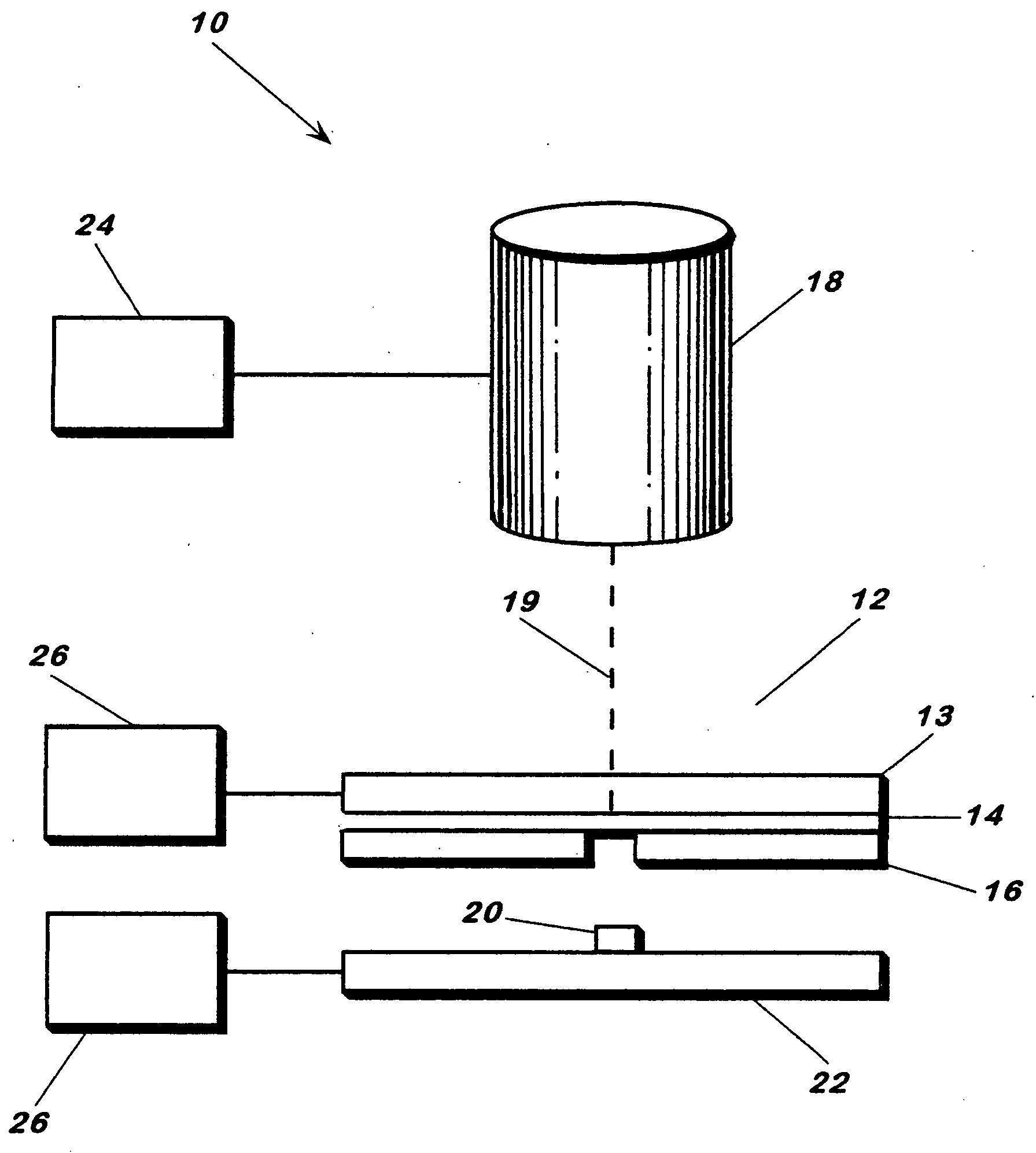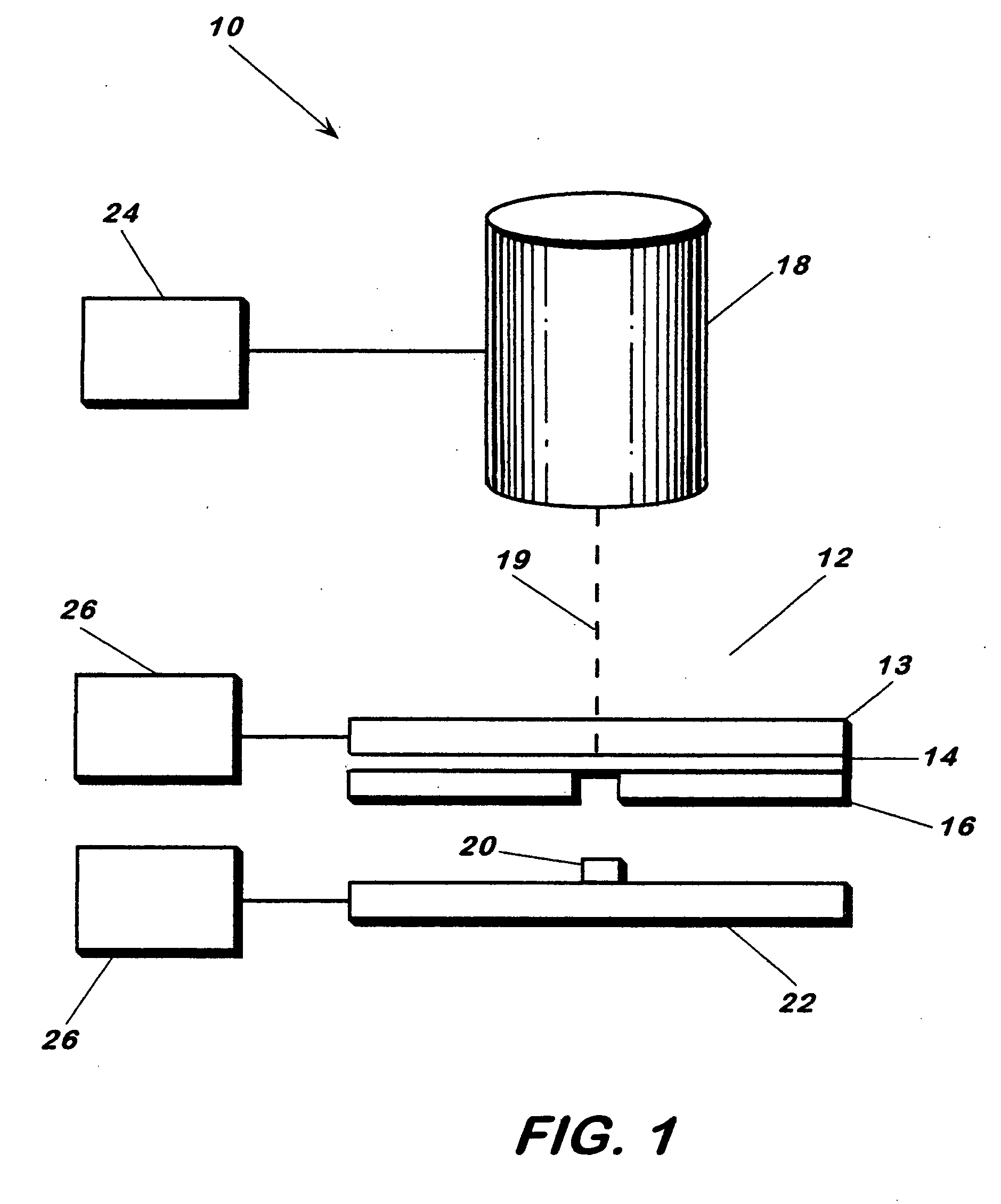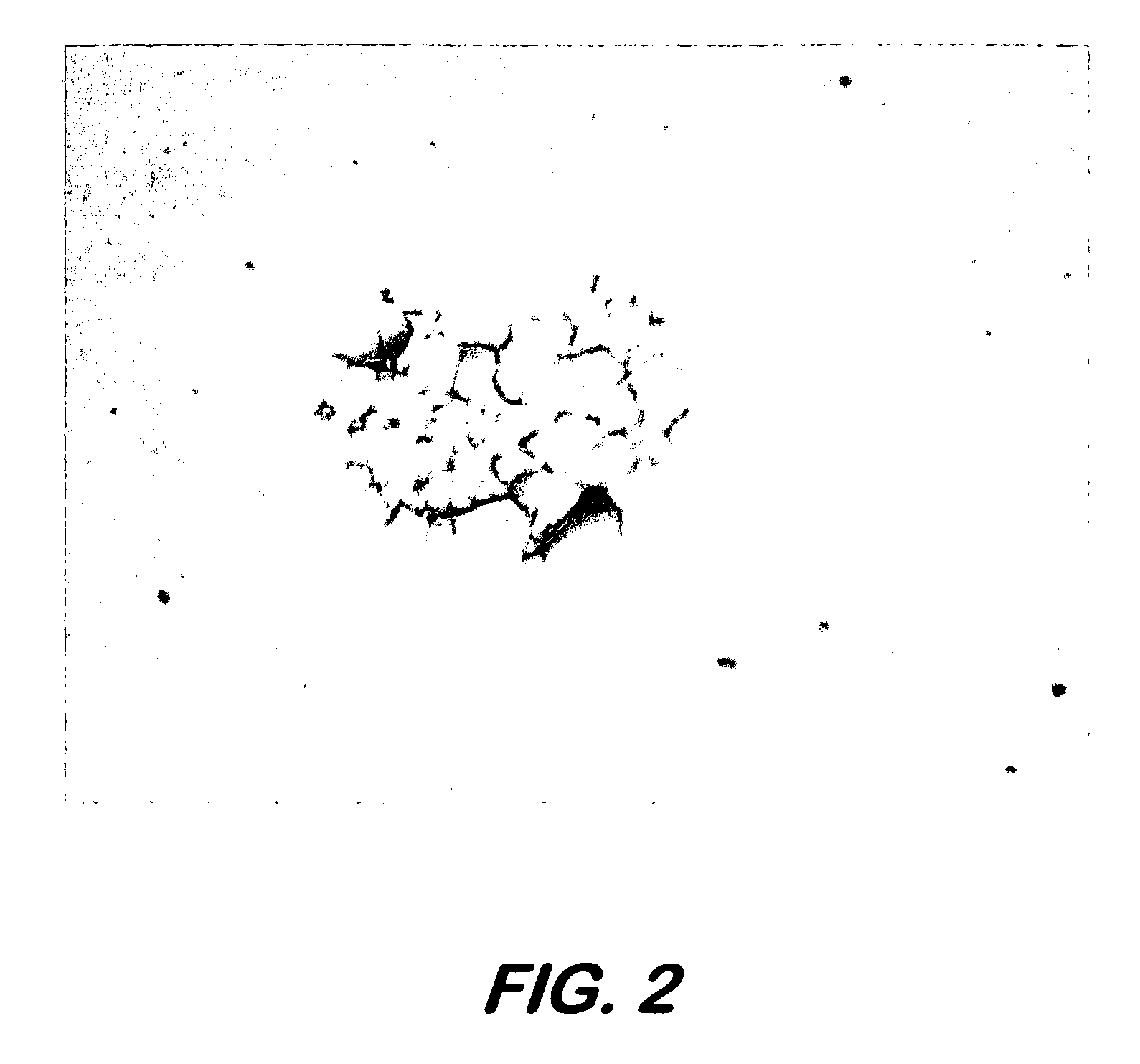Biological laser printing via indirect photon-biomaterial interactions
a biomaterial and laser printing technology, applied in the field of laser and/or photon transfer, can solve the problems of limited application or inherent limitations of the maple dw, low reproducibility of the technique, and low absorption of certain matrix materials
- Summary
- Abstract
- Description
- Claims
- Application Information
AI Technical Summary
Benefits of technology
Problems solved by technology
Method used
Image
Examples
example 1
[0057] Deposition of Eukaryotic Cells in a Large-Scale Array Format
[0058] Human osteosarcoma cells (ATCC #: CRL-1427, designation: MG-63) were cultured as per literature, trypsinized and placed in a deposition media composed of 50% (v / v) DMEM, 45% (v / v) Fetal Bovine Serum and 5% glycerol (v / v). Cell concentration in the deposition media was found to be 106 cells / mL. 12 μL of the deposition solution was spread across a 4 cm2 area of the target and then placed in the apparatus for transfer. Arrays of cell were deposited onto 1×3″ glass slides coated with a 200 μm thick Matrigel™ basement membrane matrix, immersed in DMEM and placed in an incubator 5 minutes after transfer. Twenty hours post-transfer, the cells were washed with 1×PBS and assayed via a live / dead viability / cytotoxicity kit (Molecular Probes, L-3224) (FIG. 7).
[0059] In this deposition, the laser spot was 100 μm in diameter at the laser absorption interface and laser fluence was 160 mJ / cm2. Deposition spots were approxim...
example 2
[0061] ATCC Designation MG 63 Human Osteosarcoma Cells and C2C12 Mouse Myoblast Cells
[0062] MG63 cells were initially obtained from ATCC (USA) and cultured in 5% humidified CO2 in air at 37° C. in Dulbecco's Modified Eagle Medium (DMEM) with high glucose, 10% (v / v) fetal bovine serum, and 1% (v / v) streptomycin. FIG. 4 shows a patterned row of cells transferred from a titanium-coated quartz support and deposited onto a quartz substrate coated with matrigel (50 μm). The apparatus was as described above. By varying laser spot size, the number of cells deposited could be controlled. At ˜100 μm spot size and an energy of 0.35 μJ / pulse, near-single cell transfers were obtained, at cell transfer rate of 1 cell / shot (±0.5). Laser fluence was 4.4 mJ / cm2.
example 3
[0063] ATCC Designation MG 63 Human Osteosarcoma Cells
[0064] Human osteosarcoma cells along with 10 μm fluorescent beads were transferred from a titanium-coated quartz support using the energy conversion method. The cells and beads were in a 25% glycerol, 25% cell media (DMEM), and 50% aqueous bead (0.15 M NaCl, 0.05% Tween 20, 0.02% thimerosal) solution. Laser fluence was 160 mJ / cm2 and spot sizes were 100 μm in diameter.
PUM
| Property | Measurement | Unit |
|---|---|---|
| thick | aaaaa | aaaaa |
| diameter | aaaaa | aaaaa |
| width | aaaaa | aaaaa |
Abstract
Description
Claims
Application Information
 Login to View More
Login to View More - R&D
- Intellectual Property
- Life Sciences
- Materials
- Tech Scout
- Unparalleled Data Quality
- Higher Quality Content
- 60% Fewer Hallucinations
Browse by: Latest US Patents, China's latest patents, Technical Efficacy Thesaurus, Application Domain, Technology Topic, Popular Technical Reports.
© 2025 PatSnap. All rights reserved.Legal|Privacy policy|Modern Slavery Act Transparency Statement|Sitemap|About US| Contact US: help@patsnap.com



